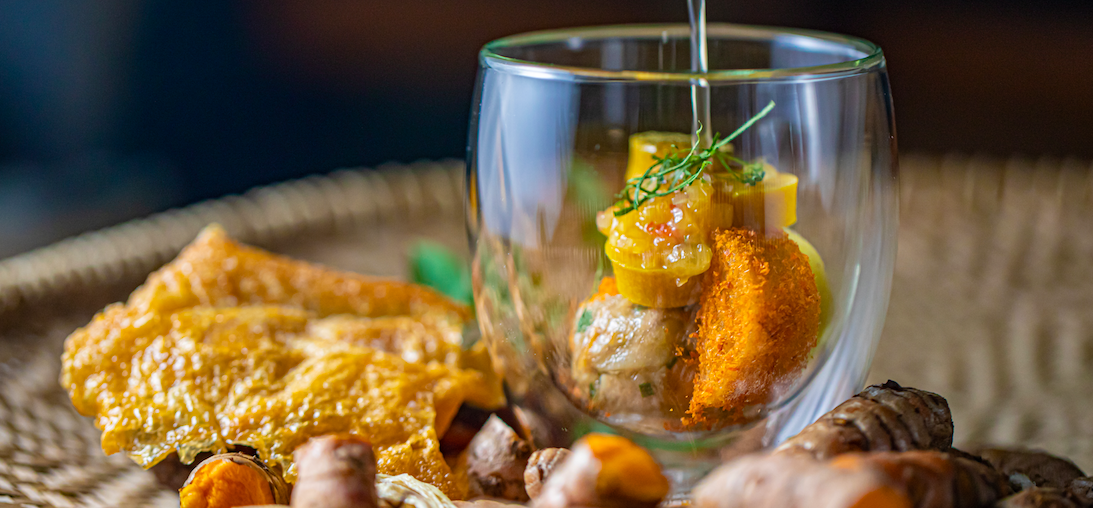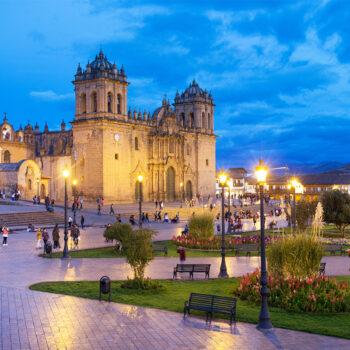
THE AMAZON POWER RETURNS TO MAIDO
Maido’s recent Tasting menu is a universe where Micha and his team
combine nikkei to amazonic dishes.

Maido’s recent Tasting menu is a universe where Micha and his team
combine nikkei to amazonic dishes.
Eighteen years ago, before Mistura, before the boom, the young Mitsuharu Tsumura worked at the Sheraton while the hotel organized regional gastronomic festivals. There, he connected with Amazonian cuisine, guided by the then-young Cindy Reátegui (La Patarashca). That’s where his curiosity began, leading him to explore the Peruvian jungle time and time again, establishing bonds with its culture, flavors, and ingredients. Today, the power of the Amazon returns to take over Maido’s menu because it was there years ago, leaving its traces. Its mark.
Mitsuharu Tsumura (Micha) knows that the Peruvian Amazon is the lung of our planet, just as the sea is its heart. However, it is one of the most neglected areas in Peru. With that in mind, he has dedicated himself to finding and supporting producers to improve processes and transmit their culture. Gradually, the power of the Amazon returns to Maido’s tasting menu, taking it over completely. «We were among the first to use mucilage» (from cocoa) and Macambo. «Now we also know that the chestnuts from Madre de Dios are a source of employment, and their value chain helps strengthen the fight against illegal mining», explains the chef.

Maido’s new tasting menu blends a traditional fine dining menu with kaiseki (a traditional Japanese multi-course dinner). In this menu, Micha and his team have combined the Amazonian and Nikkei flavors without it being restrictive: «If I have to use something Chinese or Korean, I use it. I don’t limit myself to being a purist», says Mitsuharu. Like everything in Peruvian cuisine, the kitchens of various communities organically come together in the stoves.
There are 11 courses (nine savory dishes and two desserts) that tell this love story. It starts with a sakizuke, three bites: a cylinder of Paiche ham and akami (the upper part of tuna loin), which is the first burst of flavor; Amazonian bean tofu representing the combination of the Amazon and the oriental; and a cone of ripe plantain with chorizo and cecina served in a corn container. The next course is the catch of the day in a tiradito with tendon dashi and sacha tomate (tamarillo), followed by a dish that seems to come from a tokusatsu (a live-action film or series with abundant special effects), in which tapioca tentacles are covered with sea foam and «leche de tigre.

Next comes the gindara (black cod), perfectly cooked in tempura, accompanied by a sauce made from native potatoes that leaves nothing behind in the bowl. Yes, it’s that good. The nigiri sushi skillfully uses high-quality ingredients and a deep understanding of rice preparation. The toro (fatty tuna) is sliced table-side, and the thin slice is gently seared with a hot «cachimazo» (a type of pestle) of Amazonian pink salt. The increase in temperature reacts with the fish’s fat, causing it to melt in your mouth.
Next is the Suimono (a warm soup), one of the most essential steps in a kaiseki menu. In this case, it is an inchicapi (a tipical soup from the amazon) with Amazonian dashi and tsukune, a type of chicken meatball. The udon noodles are made from taro root and served with sea urchins and kimchi, combining the sea and the jungle flavors. The Juane, a plate commonly eaten on the amazon in the shape of a severed head, is made with pork jowl and rice cooked with «cocona» and «chonta «a palm fruit. The last of the savory courses consists of sweetbreads with tucupí and plantain textures, including a puree at the base, a crispy element with the skin, and pickled flowers.
The mizugashi (a selection of desserts) is presented in two courses dedicated to Theobroma. The first is a Macambo ice cream (Theobroma bicolor) with Amazonian chestnuts, custard apple, and rough lemon. The second course is a tray of childhood memories, featuring a Chinese Copoazú jelly (Theobroma grandiflorum) with Amazonian chestnuts, a Macambo popsicle, and a surprise cocoa bonbon (Theobroma cacao).
Florencia Rey and her team handle the wine pairing, and the selection of wines is impeccable, combining specimens from Peru, the New World, and the Old World. The non-alcoholic option is limited to a few cocktails, but they are well-crafted.
Now, the connection with the jungle goes beyond that. The menu and some other elements at Maido use recycled paper and vegetable by-products processed by Taller Bosques de Papel in Tarapoto. In this way, Micha achieves a stronger voice, generating an impact full of flavor and content that continues to arouse curiosity about a pantry that is uniquely ours and often forgotten.
Tras iniciar el año con el Summer Fest, y tentar con sus festivales de hamburguesas, pollito con papas y chifa, es el turno de la sazón limeña.
Leer másProbamos algunos de los escabeches más ricos de Lima y estos son nuestro favoritos. Además, el chef Heine Herold nos cuenta cómo hacerlo en casa.
Leer másVuelve la noche solidaria Cocinemos con Fundades, donde 13 restaurantes de Lima se unen para ayudar a mejorar la calidad de vida de personas en situación vulnerable.
Leer más




